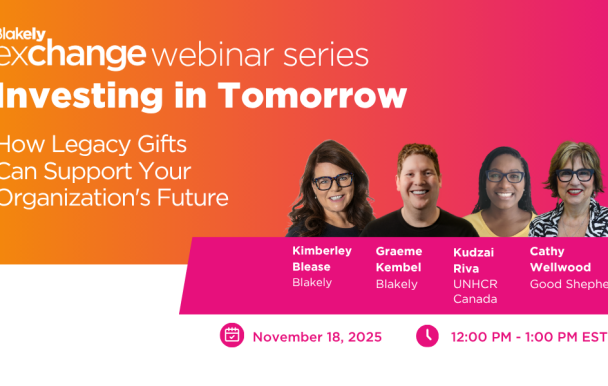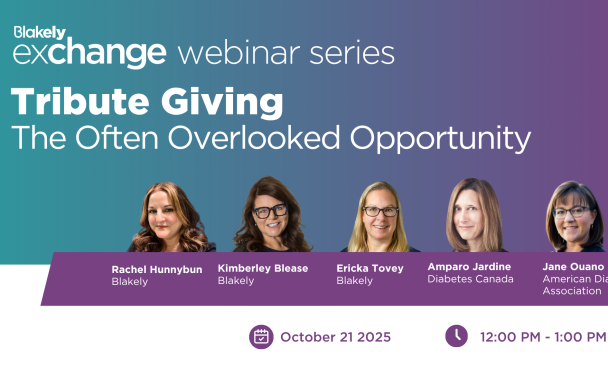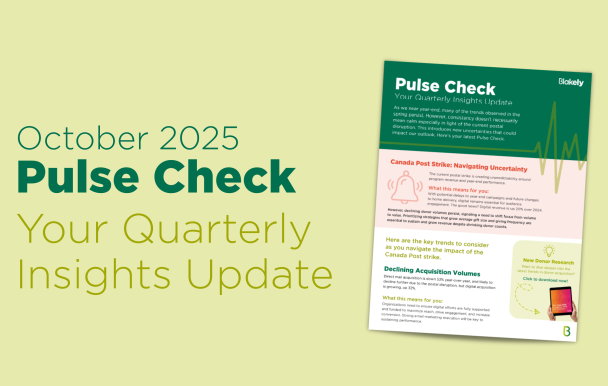Looking Differently at Tribute to Drive Engagement
As we continue to deal with the global COVID pandemic, our sector’s focus on recovery and growth opportunities continues to change. Everyone is looking to better engage donors and find new areas of growth, and in some cases, revenue replacement for large-scale events, in facility fundraising or traditional sponsorships.
Look no further than your tribute program! If you have historically treated these special donors as a part of your Annual program and used traditional methods of engagement without success (we have seen as low as 4% renewal), there are a number of reasons why.
But let’s park that for a minute and just review what is being left on the table.
We know that many mid-value, major gift and monthly donors have come from an initial gift through Tribute. And we have also seen that as much as 18% of legacy gifts are realized from Tribute sourced donors. These donors have a unique connection with your organization, but it’s not the same as donors who are giving to solve a problem. And because of that, we need to treat them differently.
To engage these donors, we need to understand the different audiences that make up our Tribute files and we need to deliver a different journey that starts with these donors being seen as an opportunity for creating relationships that have long-term value.
Different acquisition strategies
As the world is changing, so are the acquisition approaches for both In-Memory and In-Gratitude giving. We’ve seen In-Memory giving increase, while In-Gratitude declined in 2020.
People are attending virtual funerals and using virtual health care, so footfall and in-person interactions are much lower. Funeral homes are not giving out leaflets and literature, and our on-site real estate for promoting giving is being seen much less frequently.
We’re all online. So how do we create a new solution to engage funeral homes and families and connect them with our organizations?
How are you building digital products that engage your wider audience who care about your cause, in a low-cost engagement strategy that also allows you to discover others who care deeply for your cause?
To practically get there, consider prioritizing where the biggest opportunities lie for your organization based on your cause, resources, and reach. Start with one aspect of your Tribute program – the largest – and look at how you can make changes to better reach people with the option of making a gift through digital platforms, and marketing in a new way.
Different audiences
First, there is not one tribute group but three, and you need to ensure your business rules, database tracking and marketing programs reflect this. In-Memory donors have completely different drivers to In-Gratitude/In-Honour, and In-Celebrations are often made up of motivations that include In-Memory, In-Honour, In-Gratitude and lovers of your cause.
And within each audience, there are segments – someone who has lost their life partner is going to need a very different experience to someone who is donating because their colleague’s parent has passed away.
Building an understanding of these donor groups is key to future success. There are lots of tools available including relationship analytics and affinity surveys – but start with sorting the women from the girls. Make sure you are tracking and reporting differently and look at the audience definitions carefully. Start with your own insights and analytics in order to build the program, the journeys and the growth.
Different engagement
Growing tribute giving means we need to think differently about how we are treating new people who do give a tribute gift, in order to better meet the needs of each audience.
Donor motivations and needs differ immensely between In-Memory and In-Honour/Gratitude and your donor engagement strategies need to reflect that. We also need to think differently about the needs of those different segments within those audiences, and not be afraid of donors who are often on their own journey of grief and gratitude, and who use giving to us as a part of their healing journey. We can offer immense value and support here, and this will be remembered. Be human. Our gut check here is essential – how would we feel if we received this mailing/email?
Donors who are on a grief journey will, at some point, want to move on, so early journey touchpoint versus the longer-term journey needs to be considered. But with the very nature of In-Memory and In-Gratitude giving, there will always be anniversaries and key points in the year that make more sense to give again, so we need to be there with a compelling offer.
During and post-pandemic, we know that we’ve gained a focus on what’s really important to us, and the experience you deliver to donors is going to make the difference on how – or if – they give again. So, we need to stop dropping these donors into our annual appeals and create real strategy and donor journeys that drive towards a much longer – and higher value – relationship.
Tribute could be a key source of new donors that can deliver more renewal revenue and a lifetime value if we deliver a better experience by understanding their motivations. It could be just the opportunity you are looking for to drive revenue in new ways moving forward!









